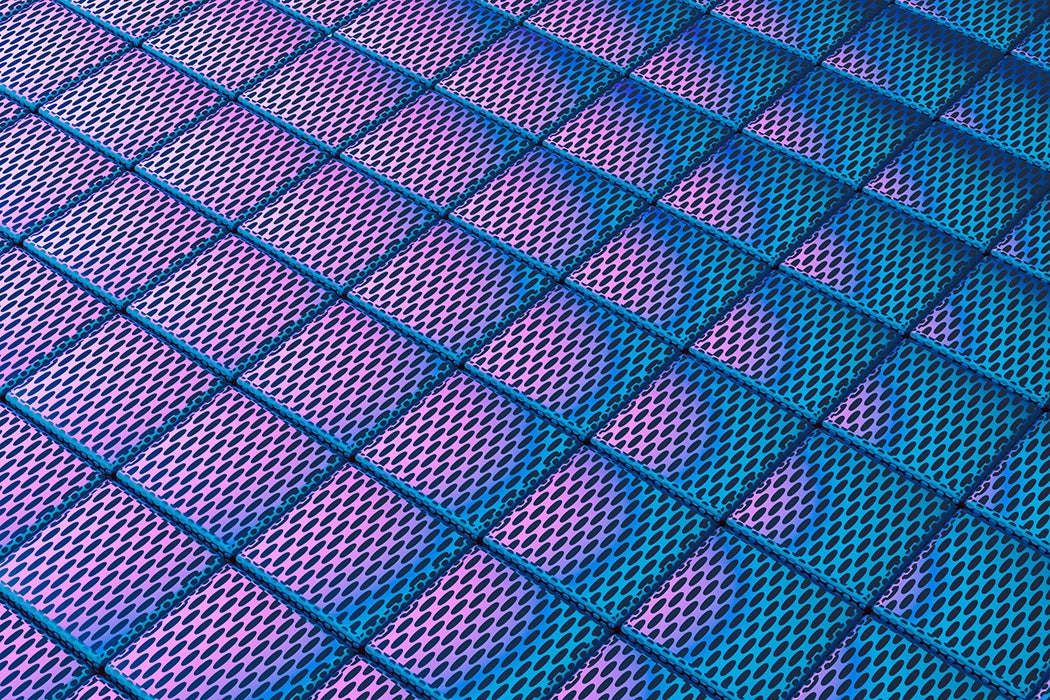A metal that is lighter than air and stronger than steel? Not quite, but Boeing has come close to inventing such a thing. In addition to being strong, the new material is incredibly light—the company’s website shows it balancing atop a dandelion (pictured above). The innovation comes from Boeing’s interest in minimizing aircraft weight and improving fuel efficiency. Surprisingly, this metal derives its properties from an unusual source: it’s mostly composed of air.
And yet its structure—the lattice—is what truly makes it so light. M.F. Ashby defines the lattice structure as “a connected network of struts.” When the struts surround very small spaces, as they do in this case, the material is referred to as a microlattice.
Lattices have many advantages over solid materials. The first obvious advantage is in weight. It’s less dense than a solid because of its networked frame, which supports more air than material. Lattices are also less brittle, as the struts or pairs of struts can flex separately, allowing it to bend or compress in ways that solid metals cannot. Depending on how the lattice is engineered, the struts can absorb energy through stretching or bending. Stretch-dominated lattices tend to be stiffer and stronger; bending structures are more pliant and better for cushioning.
Unsurprisingly, nature was the first to figure out the advantages of lattices. One of the best examples of a strong, lightweight biological lattice (and the Boeing team’s inspiration) is bone. Bones are a perfect compromise between weight and strength. A hard outer covering maintains rigidity, while a porous inner lattice provides support (in addition to minimizing weight and preserving room for blood vessels). Depending on their function, different bones have different structures. Bones that bear little weight, e.g. shoulder blades, tend to have a more open internal lattice, while strong load-bearing bones such as femurs have a much denser inner structure. Bones like the hip that bear stresses from multiple directions use a combination of multiple layers of outer shell with a sheer-resistant filling. The resulting structure is strong enough to carry the weight and movement of the entire upper body without breaking.
The downside of lattices is that they are not as strong as solid materials, and are sometimes more susceptible to damage (a few impaired lattices weaken the entire structure). As a result, Boeing initially plans to use the material in non-structural areas like internal panels or for the seats. But improvements in the technology, over time, may widen its range; the possibility of air- or spacecrafts built with lattices isn’t inconceivable.







